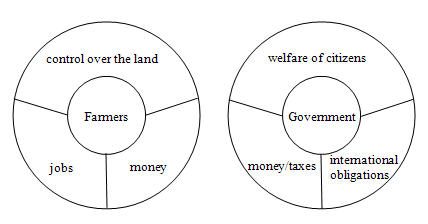Suggested Activities
In this challenge, students explore the factors surrounding Alberta's decision to join Confederation in 1905 by creating a persuasive letter or oral statement, from the position of an assigned group, that convinces others to join or not join Confederation.
Activity 1
Use historical maps to provide students with the historical context for the prairies at the turn of the century. Sources of maps include Canadian Geographic's online Historical Maps of Canada (i.e., 1882, 1905) and the Library and Archives Canada website, Canadian Confederation for Kids (i.e., Districts of Saskatchewan and Alberta, 1898, Saskatchewan and Alberta, 1905). Use a chart, like the following, to list and discuss key events and their impact on the economic, cultural and social development of the prairies and of individual groups.
Event |
Impact |
Increase in population |
- greater amounts of land were settled and developed
- more people were available to farm the land
- much of the Aboriginal hunting land was taken away due to settlement and treaties
- the Métis and First Nations traditional way of life was threatened
- the population became increasingly multicultural as more immigrants moved into the territories
|
Completion of the CPR railway |
- new business and services were brought to the prairies
- transportation to and from the prairies was easier and faster
- the prairies were connected to Eastern Canada
- increased trade provided money for business owners
- decisions regarding the railway were made by the company and the Canadian government, not the citizens of the territories
|
Wheat boom |
- immigrants were attracted to the area
- a source of income and wealth for farmers was created
- the prairies had a product to sell and export
- the Canadian government that gave farm land away and the banks that loaned and managed money for the farmers were located in Eastern Canada and controlled things from the east
|
Development of new industries, such as logging, mining and the railway |
- people were attracted to the territories
- more jobs were provided
- more money was created for the economy
|
Activity 2
Explain that, at the time, people debated whether the Canadian prairies, then part of the Northwest Territories, should be turned from a number of smaller districts, i.e., Athabasca, Alberta, Saskatchewan, Assiniboia, into one or more provinces. Suggest that many people had opinions on this issue, including the Canadian government, the prairie farmers, business owners, Aboriginal peoples, Francophones and recent immigrants.
As a class, explore the interests of some of the stakeholder groups listed above. Explain that interests, in this context, means the basic values that may be affected negatively or positively, depending on the outcome of the situation. Use the information in your chart as reference and supplement with print and electronic media, where necessary. Record the information in webs like the following:

Discuss the interrelation of interests. Ask students to speculate which groups might be in favour of Alberta joining Confederation and those that might be opposed and to outline the reasons for their positions. From the discussion, elicit and post reasons people might be for or against Alberta joining Confederation; e.g., the growing population deserved the same kind of government as other provinces, the provincial government would be able to collect taxes and pay for things like schools and health care, potential loss of control over resources, potential loss of cultural identity and traditional way of life for First Nations and Métis people.
Activity 3
Assign students, in partners or small groups, to represent an assigned stakeholder group. They are to create a persuasive letter or oral statement to convince others why they think Alberta should or should not join Confederation. Develop the criteria for an effective letter or oral statement with the class. Some criteria may include:
- clear; i.e., position is clarified
- comprehensive; i.e., presents all key information on the concerns and interests of the particular group
- convincing; i.e., makes the readers believe the information is important and believable.
Invite groups to present their persuasive letter or statement.
Activity 4
Conduct a class debate on the controversy: Should Alberta join/not join Confederation in 1905? After the debate, take a class vote to decide the issue.
Adapted from Brazilian Rainforest, edited by Don Northey, Jan Nicol and Roland Case (Richmond, BC: The Critical Thinking Consortium, 2002, ISBN 0-86491-256-0) pp. 17-25.
|








